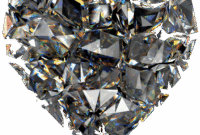What Is Inhalant Use?
Inhalant use involves inhaling fumes from everyday household products to achieve a “high” caused by cutting off oxygen supply. There are several methods for inhaling these fumes, including:
- Huffing: Soaking a rag or piece of clothing with the substance and breathing in the fumes
- Bagging: Spraying or pouring a substance into a plastic bag and inhaling the fumes
- Sniffing: Inhaling directly from the container
- Chroming: Inhaling markers, aerosols, paint, gasoline, etc., to get high from the fumes
Who Uses Inhalants?
Inhalant use is more common among younger teens, particularly those in middle school. This trend is not seen with other substances: Older teens are less likely to use inhalants. This is possibly due to the perception that inhalants are “kids’ drugs” and the availability of other substances as teens get older.
According to the 2024 Monitoring the Future study, most inhalant initiation happens by 9th grade and often starts in 7th grade. That means middle school is a critical time to intervene.
What Products Can Be Used as Inhalants?
Inhalants are common household, school or workplace items. When used for their intended purpose, these products are generally safe. But they can be harmful when intentionally inhaled.
Common inhalants include:
- Aerosols: Deodorant, air fresheners, hairspray, spray paint, whipped cream chargers that contain nitrous oxide (which is commonly referred to as “laughing gas”)
- Solvents: Found in paint thinners, gasoline, certain glues, nail polish remover, correction fluid
- Others: Helium, propane, air conditioner coolant, lighters
A recent trend involves using Galaxy Gas, a popular brand of flavored whipped cream chargers that contain nitrous oxide. These larger canisters hold up to 500 grams of the gas, compared to the typical 8 grams in smaller canisters. They also feature a variety of flavors, which increase the risk of misuse, especially among children.
“Chroming” is a similar trend that involves inhaling everyday items such as permanent markers, aerosol hairspray or deodorant, spray paint, computer dusters, paint thinners, nail polish, lighter fluid and gasoline to get high from the fumes.
Social media posts on TikTok and Facebook have increased the popularity of both Galaxy Gas and chroming among teens in recent years, and have downplayed dangers related to misusing these everyday products.
Some common street names for these products are whippits, gluey, huff and rush.
What Happens When Someone Uses Inhalants?
Inhalants cause a brief high from inhaling a product that contains a hydrocarbon. Effects can be felt within seconds. The gas is quickly absorbed into the bloodstream and can lead to effects on the brain, heart and other organs.
The consequences can be short-term, long-term or even fatal.
- Short-term effects: Dizziness, nausea, headache, confusion, slurred speech, lack of coordination, and unconsciousness.
- Long-term effects: Damage to the brain, nerves, kidneys, liver, muscles, and bone marrow.
- Sudden sniffing death: Irregular heart rhythms may occur with inhalant use which may result in sudden death. This can occur with first use.
Inhalant use can also result in death from asphyxiation due to repeated inhalations, suffocation (using plastic bags to inhale), or choking on vomit.
Signs of Inhalant Use
- Unusual amounts of household products being purchased or disappearing
- Presence of plastic bags, chemical-smelling rags or empty containers
- Chemical odor on the breath or clothes
- Rash on the face or persistent sore throat
- Behavioral changes such as new friends, declining grades, or sudden health or weight changes
How to Prevent Inhalant Use
- Talk with your kids (especially middle schoolers) about the dangers of inhalants.
- Teach safe use of household products and explain that misuse can be deadly.
- Include inhalants when you talk to your kids about substance use.
What to Do If You Suspect Inhalant Use
- Keep the individual calm and do not argue. Stress can make the situation worse and increase the risk of sudden sniffing death.
- If the person is unresponsive, not breathing or having seizures, call 911 right away.
About the author: Alysha Currie, RN, CSPI
Alysha Currie, RN, MSN, CSPI, ICPS, is a nurse, Certified Specialist in Poison Information, and an Internationally Certified Prevention Specialist. She has more than 25 years of experience at the Drug and Poison Information Center hotline at Cincinnati Children’s.
Disclaimer: This content was automatically imported from a third-party source via RSS feed. The original source is: https://blog.cincinnatichildrens.org/safety-and-prevention/whippits-huffing-nitrous-gas-what-kids-are-inhaling-for-a-high/. xn--babytilbehr-pgb.com does not claim ownership of this content. All rights remain with the original publisher.



